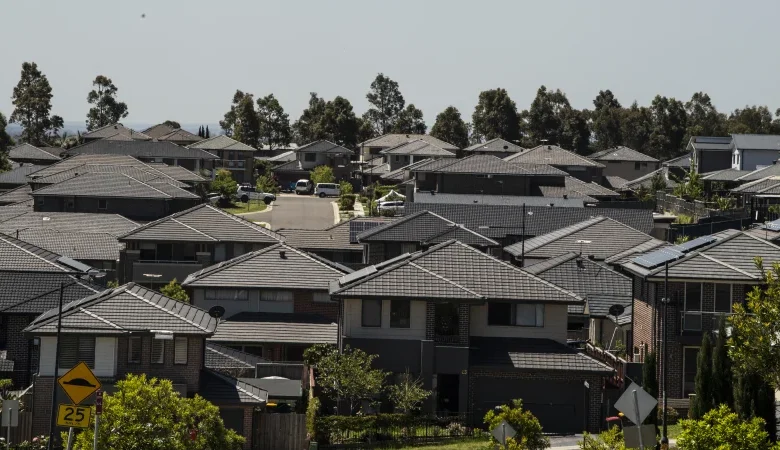The top seven Moving and Real estate trends in Australia

More Millennials
Many Australian millennials are first-time homebuyers, constituting the largest adult demographic. Eliza Owen, CoreLogic’s Head of Australian Research, believes the property market will reflect their choices in ten years.
Because 80% of first-time purchasers prefer existing housing to new construction, this could increase demand for it. The best suburbs may benefit from capital-city effects.
Various city neighborhoods may entice buyers. Owen thinks a Melbourne cohort would choose the southwest or Central Coast for a lifestyle because it is a natural extension of the inner west.
Senior Australians may need help downsizing, resulting in family housing shortages. In 2011, 23.9% of NSW’s two-person family homes had four or more bedrooms. Owen reports a 28.9% increase for census 2021.
This trend may reverse as Baby Boomers retire and choose larger detached homes.
Stone Steps
Only some buyers can acquire a family home immediately. Younger buyers may take longer to transition from renting to owning a property.
Only some can afford to stay in their first house for 20 years. Apple says, “It’s about working your way up the property ladder, maybe starting with an apartment and then thinking about upgrading or progressing from that point.”
If they cannot afford their dream home, more first-time buyers may consider investing. Fox advises them to live with their parents or rent in a desirable location rather than invest in a first home, which may collapse.
New approaches
Fox anticipates a large number of young people to experiment with property ladder climbing and new ownership patterns.
Fox believes that despite the failure of fractional ownership, some people may try inventive real estate ventures.
She advises against formal or informal arrangements, such as friends purchasing a home, if circumstances change and are not adequately managed.
CoreLogic’s head of research, Tim Lawless, anticipates various ownership kinds to spawn new business models over the next decade.
Investors can inspect real estate without owning it by investing in publicly listed property portfolios.
Reducing the backyard space
Major Australian cities are increasing. Lawless forecasts increased high-density housing.
More apartments.
He remarks, “We’re already seeing a gradual shift towards densification, driven more by necessity and the maturity of our markets than by preference.”
Poor affordability contributes. Home deposits take longer, and property values rise faster than income, reducing the Australian block.
The national median lot size decreased from 530 to 370 square meters in 2007. Lawless revealed a third shrinkage after 15 years.
Despite the restriction, many Australians are concerned about smaller dwellings.
When possible, homeowners trade in their backyards for new residences. Lawless asserts that housing affordability will not rise.
As cities shrink, new residences must meet city limitations. Lawless advises boosting the number of houses for sale and providing buyers with additional outside areas to increase revenues.
Going Green
Environmental concerns, incentives, and regulations may make new and existing homes more sustainable, encouraging retrofitting. Current properties may sell for more than previous ones.
Lawless expects energy efficiency and building design that requires less energy to heat, calm, and maintain will be prioritized despite its early stages.
“Policy will incorporate it more frequently, and technology and community goals for more environmentally sustainable outcomes will make it possible.”
The Federal Budget guaranteed remodeling subsidies and Energy Star ratings for existing houses by 2023.2.
Nations advance. The UK government establishes minimum energy criteria for rental properties, demands energy certificates for market houses, and collaborates with financial institutions to encourage renovations.3.
He speculates that “a home with a certain star rating will eventually be paid more, and it will become a medium to long-term consideration in the market.”
Fox anticipates an increased need for improved house and neighborhood data.
Fox believes climate change property risks are being pursued. Ask if they live in a flood- or fire-prone area.”
“That will grow to be a significant factor in determining their purchase consideration and the risk profile of lenders.”
City Growth
Regardless of climatic change, Australians prefer beachfront and country houses.
Despite significant enquiry, Lawless claims that these areas were selected. Rising insurance premiums could change this.
Short-term pandemic geography is shrinking.
Lifestyle purchases may be more difficult after the regional internal migration surge. Several are now more expensive. Lawless projected success for houses within a few hours of big cities, offering fast internet, good schools, and healthcare.
Despite waning enthusiasm, Thompson believes the tree change will appeal to people with promising professional futures.
More tenants
Including lifetime tenants will necessitate modifications in housing legislation. Rentals affect the property mix; thus, it must change.
Homeownership should decline as affordability falls. We encourage construction-to-rent to improve rental circumstances, tenure security, and tenancy reform (“Lawless”).
He recommends communal rentals or government.
For long-term rentals, Australia can expand “build to rent” complexes.
According to Owen, “the build-to-rent segment and alternative housing providers are going to become central to avoiding a repeat of the rental strain we’re seeing right now” in the rental market.
Thompson believes that fresh models promote creativity and new offerings.
Concluding:
In a competitive market, younger purchasers may become homeowners by living with friends or forming a fractional ownership structure.
Large backyards may become increasingly rare in heavily populated capital cities.
Most property values are influenced by residential energy efficiency.
High-risk zones are too expensive to insure; therefore, customers are becoming more aware of climate problems.
As rural demand declines, Australia’s population will grow primarily in cities.
The new Australian real estate law should empower tenants.


